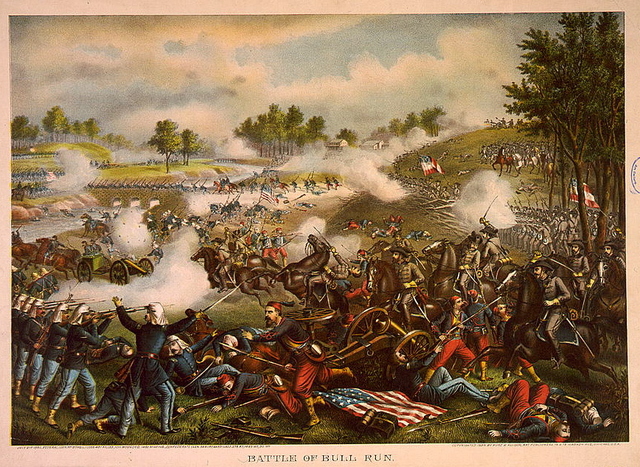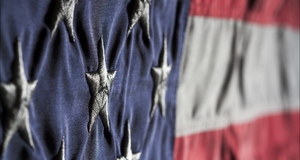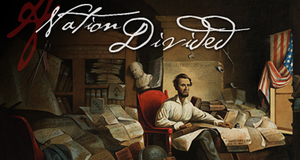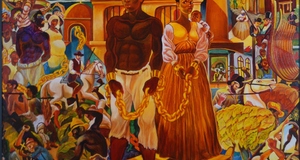Featured Article:Rethinking the American Civil War, Through the Eyes of a Teenager
By
2010, Vol. 2 No. 01 | pg. 1/3 | » The legacy of the American Civil War with which we are left is one that emphasizes a participatory American populace, overwhelmingly enthused over and invested in the conflict. Particularly in the North, we are likely to think of a cooperative culture unifying civilians and the enlisted in a shared war effort. Indeed, the popularity of this vision is such that a production currently runs at Boston’s Huntington Theatre called A Civil War Christmas: An American Musical Celebration. While self-congratulatory histories of uplift and reconciliation everywhere abound, contradictory records lay buried in newspapers, letters, town meeting minutes, military records, and the diary of teenager Mary Seline Whitcomb, kept between 1858 and 1864 in Swanzey, New Hampshire. The daughter of a well-to-do farmer, a sometime domestic servant and later a schoolteacher, her tales of ‘gadding’ about, keeping house, and teaching school are interspersed with a record of her experience of the war, which contrasts sharply with what historian Alice Fahs calls the ‘Imagined Civil War.’1 While it is unsurprising to find the laudatory narrative of the Civil War perpetuated in today’s public school textbooks, Hollywood screenplays, and other excrescences of the dominant cultural narrative, even Civil War scholars can be found to leave unchallenged the portrayal of a populace dedicated to, if not enthusiastically engaged in, the conflict.2 The burial of a more complex reality began as the events in question occurred, which interment efforts were strengthened after the war’s close. Print and consumer culture in the North led to no shortage of war stories, songs, poems, ephemera, fashions, and baubles glorifying the bloodshed as it transpired.3Following the cessation of hostilities, a self-congratulatory national narrative was refined by some of its most involved participants. Union veterans, presidential secretaries, and the Provost Marshal wrote their accounts, telling of a country united, confident under their leadership. These authors neglect to describe a Union army that saw more than 12% of its enlistees desert, assisted and encouraged by their communities. Draft resistance and subtler negativity toward the war effort were and are left out of the official portrayal of events. Some resistance to the conflict was inspired by party politics, but some resistance was more intuitive.4 And while recent scholarship on the American Civil War seeks a more complex view, informed by a broader array of sources than the readily available vat of official accounts, someone otherwise unacquainted with Civil War history beyond a public school and Hollywood education might read Whitcomb’s negativity toward the war as a fringe anti-war voice, detached from the overall climate of enthusiasm for the war effort and civilian participation. Contextualizing Whitcomb within her town and her times, one will find similarities in her reaction to the war to those of many New Hampshirites. The troubles in regard to our country are fast increasing. Mary Seline Whitcomb began her diary in 1858 at the age of fourteen. With a few rare exceptions, the entries prior to 1861 are uniformly brief and devoid of detail and sentiment. Whitcomb was seventeen years old when she wrote that ‘Fort Sumter was taken by the Southerners,’ leading to the call for ’75.000 now to be raised by the free states.’ Her country had declared war, but she did not wax sentimental about the ‘transfiguration’ of her flag ‘since … the flame and smoke of Sumter,’ as did author Grace Greenwood. Though ‘startled by the guns of Sumter,’ if she was among music critic Richard White’s ‘loyal Americans [who] assembled’ after ‘the bombardment of Fort Sumter … to sing,’ it went unrecorded in her diary. Whitcomb felt, ‘Truly, this is an awful state of affairs when people of the same country are going to wage war against each other.’5 The events of Fort Sumter had occurred on the 12th of April, 1861, nine days before their appearance in Whitcomb’s diary on the 21st, but it is probable that she was aware of them before then. The hebdomadal New Hampshire Sentinel6 was published weekly in Keene, a larger, more urbanized town about five miles north of Swanzey where she had spent a year working as a domestic servant and to which she maintained social ties. The Sentinel’s 18 April 1861 issue broke the news of ‘Civil War begun by the Rebels: Fort Sumter Attacked and Taken!’ Providing all information about the incident and the aftermath then available, including the full text of Lincoln’s call for troops, the Sentinel’s editorial staff alludes to existing awareness of the events among their readership, proud that Granite Staters were ‘acting promptly and patriotically’ in response to the situation. The jingoist narrative of war had already begun in Republican Keene, where the editors of the Sentinel bloviated on patriotic duty and the ‘honors of war.’ Yet even as they sought to eliminate dissent, they did not erase it. They acknowledged that New Hampshire, and indeed the country, was rent with partisan political divisions when they wrote that, ‘We are at length rid of all party distinctions, save those of patriotism and rebellion,’ further noting that ‘Those hitherto opposed to the present Administration are rapidly wheeling into line and taking a position under the “stars and stripes” in defence of their government and country.’ The following day, thirty miles to the north, their colleagues at the Democratic New Hampshire Argus and Spectator challenged their assertion. ‘When the republicans now call upon us to defend our country, can we close our eyes to the fact that their twenty years “war upon the slave power” has provoked the war which is now declared?’ By September, the Argus had reneged, writing, ‘The union is too precious and has conferred too many blessings not only upon the American people, but upon mankind, to go down at this time.’ The Sentinel’s assertion had been vindicated, ‘A few of the more bitter and unrelenting still hold out, but the atmosphere will soon be too hot for them.’7 I fear there are traitors of the darkest hue very near the head of government. Whitcomb would never live to see a day when she was legally permitted to vote, and her interest in electoral and party politics extended only about as far as its attendant community manifestations. Town meetings were mostly noteworthy because they temporarily drained her world of men. Elections were reported when they accompanied weddings and picnics, but she never records their results. Whitcomb briefly and uninterestedly marked the 9 March 1861 Democratic Caucus, but party names are otherwise mentioned nowhere in the diary. Nevertheless, voting tallies from every election during the diary years, as reported in Concord’s New Hampshire Statesman, show that Swanzey was a solid Democratic stronghold, consistently voting for the Democratic over the Republican party. Though she neglects discussion of parties, the influence of ‘this important Democratic town’ is occasionally evident in her desultory comments on current events and issues though, admittedly, the content of Whitcomb’s diary reveals the author’s strong detachment from national affairs. In the aftermath of John Brown’s raid on Harpers Ferry that shook the nation, she instead kept records on the scholarly aptitude of her new pupils. When he was hanged, though bells rang in Manchester and Dover, New Hampshire, Whitcomb reported the funeral of a friend and fellow schoolteacher. And when the Emancipation Proclamation came down and the ensuing reactive fury was being hashed out in Town Hall, she muses, ‘Went to the street and concluded from the throng of men that it must be Town Meeting day. I wonder if it is Town Meeting day.’ Indeed, the three-hour meeting in question eventually issued, by a large majority, a condemnation of the Emancipation Proclamation, which condemnation the men of Swanzey then sent by messenger to President Lincoln.8 So notorious was Swanzey for its Democratic convictions that a particularly vicious piece of satire appeared in the Sentinel in March 1865. ‘Natural History—The Copperhead,’ wrote of the ‘curious animal’ found in ‘all parts of the Union, as well as New Jersey, Swanzey and Marlow.’ Alternately known as Peace Democrats, copperheads were anti-war Northern Democrats, described in the following way: "Generally of a dirt color, and when none have been cut off to avoid the draft, has five toes and five claws at the extremity of each fore paw or arm ... it feeds upon offal and the bodies of dead patriots … though it will travel with lightning speed northward, (towards Canada) no means have been found to induce him southward, which is probably owing to the fear of the negro."9 Whitcomb’s own views on slavery were neither strong nor, seemingly, well developed. The reality of slavery was little more than an abstraction to Mary Whitcomb, who was detached enough from the subject that, despite relating her role at the 20 March 1861 Lyceum in reading the essay which was the foundation of the evening’s debate, she provides no further information on how the debate went, the arguments presented, nor which side won out as to whether ‘slavery is the proper condition of the African race.’ The 1860 Federal Census found 349 households in Swanzey, only two of which included people of African descent, the names of whom appear nowhere in Whitcomb’s diary. It is probable that, in such an overwhelmingly white town, the lives and trials of all Black people were themselves an abstraction. It sounds very much like sympathy when she reflects that the blame for the bloodshed and wasteful public spending would be ascribed ‘to the poor negro,’ but her alternate proposal, to have ‘bought them out of bondage,’ is one that appeals to slaves’ fundamental status as chattel rather than as humans. Her economic, political, and social naïveté are further on display as she airs her belief that ‘the end of slavery has been in view.’10 Two weeks after the local debacle surrounding the Emancipation Proclamation, Whitcomb tells her diary that she has finished reading Caroline Lee Hentz’ 1854 novel, The Planter’s Northern Bride, which ‘show[s] the lights of Southern life.’ Hentz’ novel was a pro-slavery response to Harriet Beecher Stowe’s Uncle Tom’s Cabin, written two years earlier, about Eulalia, the daughter of a New England abolitionist who marries a slaveholder. Initially appalled by her husband’s maintenance of human property, after observing how well he treats his slaves and how content they are in his charge, Eulalia discards abolitionism as a valid philosophy. Whitcomb felt that, ‘if more books of this kind had been circulated and read it would have done much towards tearing down the prejudices of the North and averting the present great calamity of civil war.’11 We went out and saw the company of volunteers this forenoon. While never herself a proponent of the war, Whitcomb nonetheless took part in observing the spectacles that accompanied it. It seems likely that Fort Sumter’s penetration of her disinterest in national affairs was due to the spectacular community reaction. Handbills began circulating on 19 April for a mass meeting of Cheshire County citizens to assemble in Keene on the 22nd. The ensuing swarm of citizens was the largest ever held in the Square, overflowing every possible indoor accommodation. Leaders of both political parties rallied the citizenry in favor of the Union cause while men enlisted and organized themselves into military units. Whitcomb was not there, but she kept abreast of war news, occasionally entering scraps of information into her diary.Continued on Next Page » Suggested Reading from Inquiries Journal
Inquiries Journal provides undergraduate and graduate students around the world a platform for the wide dissemination of academic work over a range of core disciplines. Representing the work of students from hundreds of institutions around the globe, Inquiries Journal's large database of academic articles is completely free. Learn more | Blog | Submit Latest in History |

















